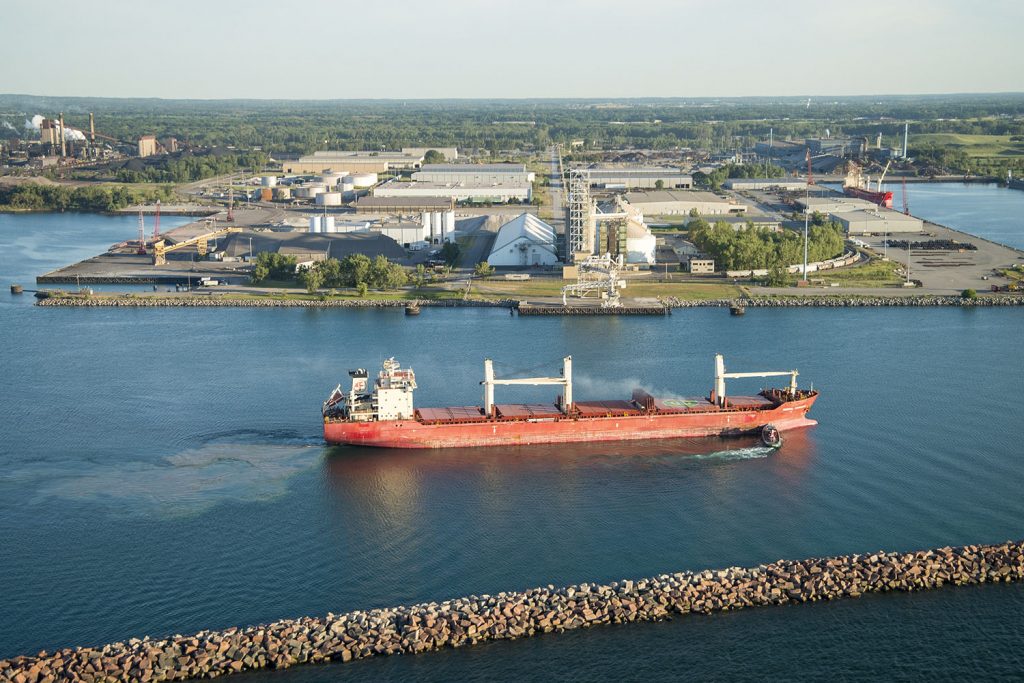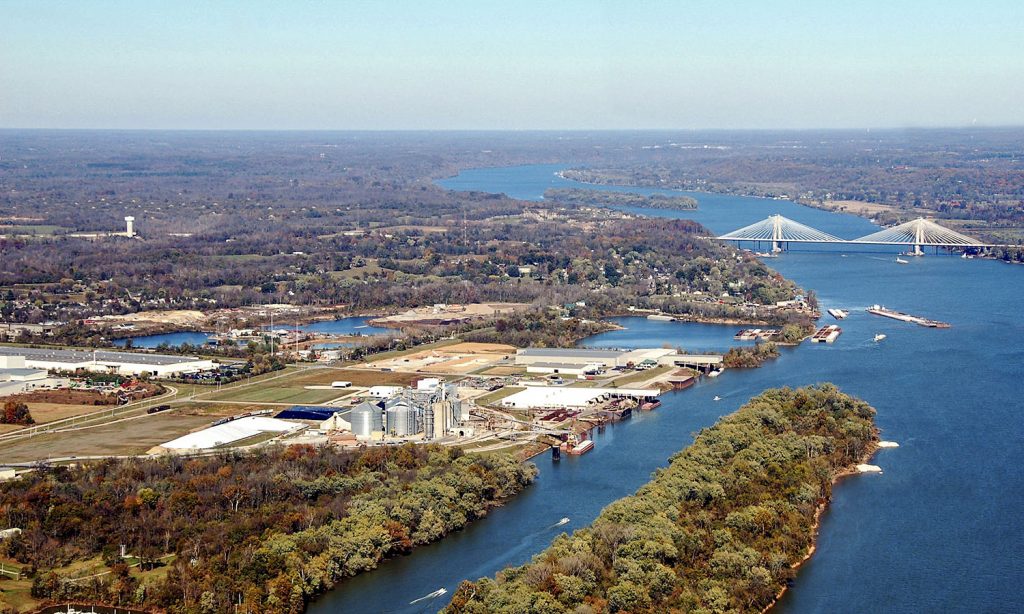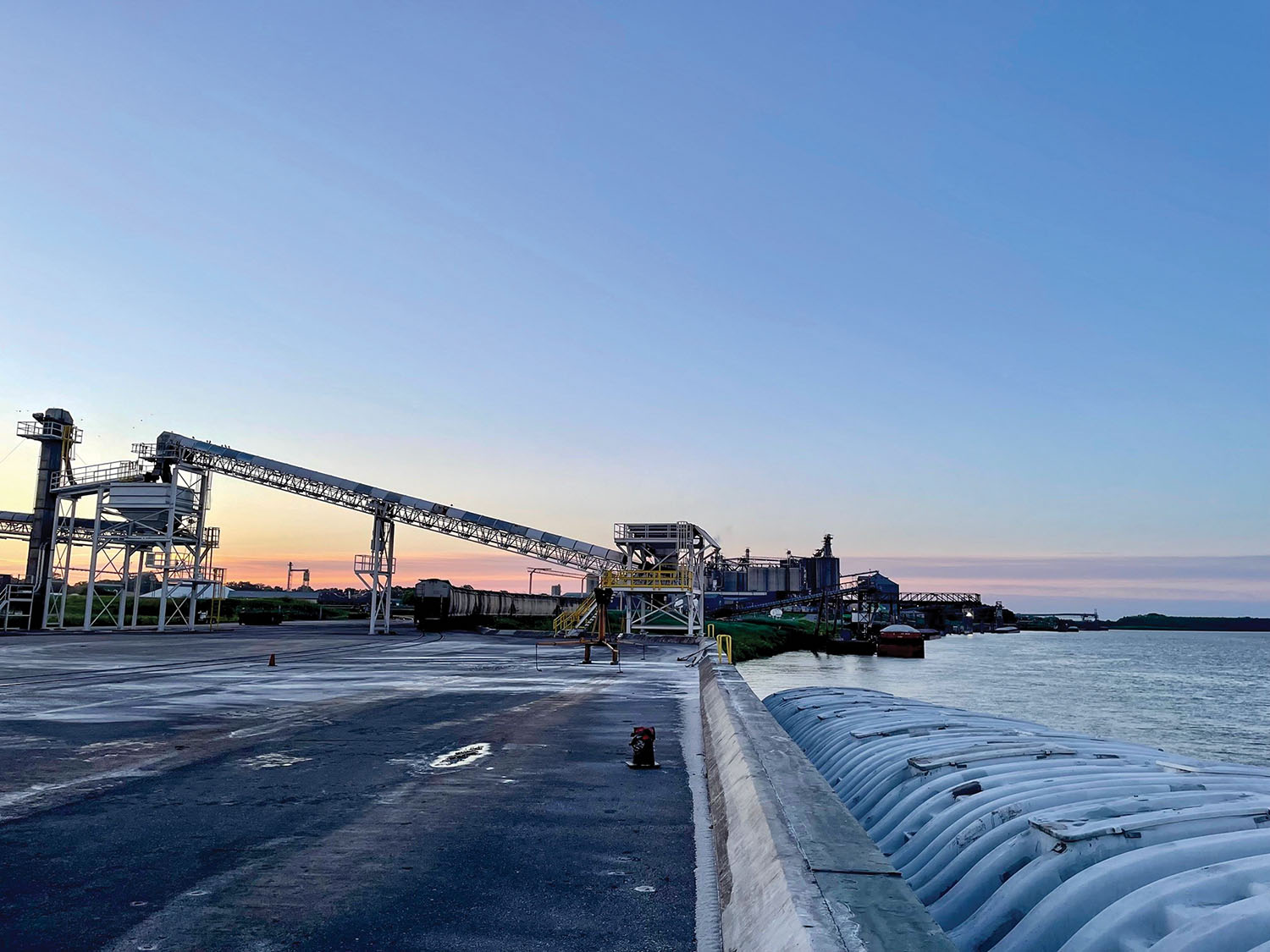The Ports of Indiana handled more than 11.2 million tons of cargo in 2021, resulting in a 33.6 percent increase from 2020. The past five years’ shipments (2017-2021), including the hard-hit pandemic of 2020, have totaled more than 58.7 million tons, which set a new five-year high for the three ports. In comparison, the previous five years’ shipments (2012-2016) totaled 49.1 million tons.
Both Burns Harbor and Jeffersonville achieved their highest shipment totals to date. In the history of Ports of Indiana, more than 259.8 million tons have been shipped using its three ports.
Major cargo increases in 2021 for the Ports of Indiana overall included a rebound in coal (213 percent), salt (141 percent), steel (40 percent), grain (39 percent), minerals (23 percent), oils (21 percent) and limestone (20 percent). Additional increases included coke and project cargo such as wind turbines.
“The Ports of Indiana recovered very well after a down pandemic year,” said Ports of Indiana chief executive officer Vanta E. Coda II. “Burns Harbor and Jeffersonville had their best tonnage years ever thanks to our core businesses growing, a steady economy and new shipment opportunities taking advantage of our world-class infrastructure and value-add partners.”

Burns Harbor
On Lake Michigan, the Ports of Indiana-Burns Harbor handled 3.39 million tons in 2021, up nearly 50 percent compared to 2020, and reached its highest annual shipment total since it began operation in 1970. The past five years’ shipments (2017-2021) totaled 13.77 million tons.
Limestone was up 92 percent from the previous year. Steel shipments continued to grow by 67 percent compared to 2020. Project cargo, including wind turbines and mega storage tanks, was down compared to its best year in 2020, but remained well above all other prior years.
“For Burns Harbor, 2021 was ripe for opportunities,” said Port Director Ryan McCoy. “We had several non-scheduled freight shipments that landed at just the right time. Our infrastructure was ready, and we were able to capture new projects.
It was a banner year.”
The approximately $20 million Burns Harbor expansion, partly funded by a FASTLANE grant, will continue to be developed over the next few years and include new shipping berths, a truck marshalling yard, 1,200-foot expansion of a cargo dock and a new cargo terminal with multimodal connections for handling cargo transfers between ships, barges, rail cars and trucks. The construction of two new rail yards has already been completed.

Jeffersonville
The Ports of Indiana-Jeffersonville on the Ohio River handled 3.22 million tons, up 21.6 percent compared to 2020, reaching its highest annual shipment total since it began operation in 1985.
Salt was up 59 percent from 2020, while grain was up 49percent, adding more than 1 million tons. Steel also increased, by 21.6percent.
A $10 million Transportation Investment Generating Economic Recovery (TIGER) grant initiated substantial changes in Jeffersonville a few years back. The grant provided partial funding for $24 million in infrastructure enhancements that has added nearly 4 miles to the port’s existing 11-mile rail network. The project will enhance and overhaul the railroad infrastructure and intermodal capabilities throughout the entire port. The project is in the final stages and will officially be completed this spring. The scope included construction of:
• siding to accommodate unit train delivery to and from the port;
• waterfront railroad infrastructure, including two new rail loops;
• waterfront intermodal facility that more than doubles the capacity of bulk commodities transferred from rail cars to barges; and
• rail yard that allows cargo to be transferred between trucks and rail cars
Mount Vernon
Also on the Ohio River, the Ports of Indiana-Mount Vernon handled 4.65 million tons, up 32 percent from 2020. Coal shipments were up 241 percent, especially in the third and fourth quarters meeting export demand, yet down considerably compared to prior years.
Salt (143 percent), minerals (73 percent), grain (90 percent), steel (32 percent) and fertilizer (21 percent) were all up in 2021. A large grain crop with strong prices prompted producers to invest in fertilizer, resulting in an increase for both products. A rebound in manufacturing drove steel coil volumes up.
Mount Vernon gained a new rail switching operator in November 2021. POI’s common carrier Southwind Shortline Railroad, dba Port Terminal Railroad, is now operated by Squaw Creek Southern Railroad. Having rail switching services provided by Port Terminal Railroad aligns the port’s operations with federal common carrier standards and provides a viable economic basis to support the port’s rail infrastructure. It is customer and port focused, which prioritizes operating standards, best-in-class services and public stewardship.
Caption for top photo: Ports of Indiana-Mount Vernon. (Photo courtesy of Ports of Indiana)




